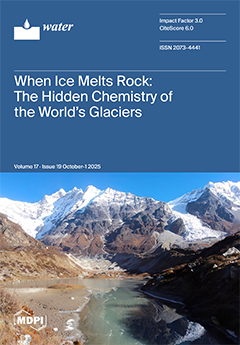The water consumption processes of vegetation play an important role in water resource management in semiarid regions, while the difference in water consumption between native and exotic species is unclear. In this study, the exotic
Pinus sylvestris L. var.
mongholica Litv. (
Pinus) and the native
Salix psammophila (
Salix) in Mu Us Sandy Land were selected as the research objects, and their water consumption characteristics were studied via in situ experiment and stable isotopes (δ
2H and δ
18O). Results revealed that vegetation water consumption caused spatial variation in soil moisture, allowing the soil profile to be divided into active, stable, capillary support and saturated zones.
Pinus primarily used water from the active and stable zones, whereas
Salix relied more on the capillary support and saturated zones. Water consumption patterns also varied seasonally, for example, at the beginning of growth (May–June),
Salix and
Pinus mainly use shallow soil water and begin to use deep soil water and groundwater with growth. During July–September, they absorb soil water mainly in the active zone and stable zone. Both
Salix and
Pinus can freely switch water sources between deep and shallow layers according to water demand. The seasonal fluctuations in precipitation and groundwater level were the main factors driving the seasonal changes in the water consumption of the two vegetation types.
Pinus has better strategies to adapt to droughts than
Salix, but its water consumption is higher than that of
Salix. Therefore, proper management is needed to control the reasonable density of
Pinus plantation to balance the water consumption of vegetation and groundwater recharge. The results can provide a scientific basis for the reasonable vegetation reconstruction in the Mu Us Sandy Land.
Full article





